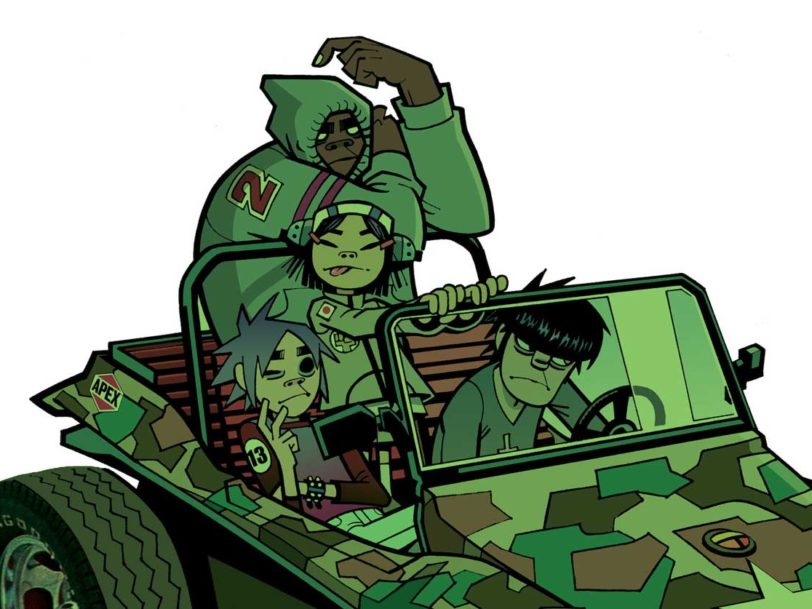If any band captured the zeitgeist of the early 21st century, it is Gorillaz, who succinctly encapsulated their outlook in the chorus of their debut single, Clint Eastwood: “The future is coming on.” The groundbreaking, award-winning “virtual band” has been helmed since 1998 by Damon Albarn, who had been itching to experiment outside of Blur, the group that had brought him fame in the Britpop era. The problem of where to put Albarn’s potentially centreless and mismatched alternative songbook found a fine solution in working with another icon of British culture, Jamie Hewlett, who had shaken up the comics world with his provocative Tank Girl series (later adapted into a film), and with artwork for Blur contemporaries such as The Senseless Things and Cud, before sharing a flat with Albarn. Together, the pair shaped the sound and vision of Gorillaz’s debut album.
Listen to Gorillaz’s debut album here.
Backstories and collaborations
To bind Gorillaz together, Albarn and Hewlett created a multicultural line-up, the members of which (Albarn’s stand-in, 2D; bassist Murdoc Niccals; guitarist/keyboardist Noodle; drummer Russel Hobbs) had full backstories and are still turning out Spotify playlists and audio-visual projects today. And why not, in this digital world? Hewlett’s distinctive artwork graced Gorillaz’s single and album covers, promo videos and other tie-ins, while the band’s name appeared to be a nod to that most famous of manufactured groups, The Monkees (Hewlett had notably provided artwork for Rampage’s 1995 drum’n’bass cover of The Monkees’ theme tune).
Released on 26 March 2001, Gorillaz’s debut album kicked this grand concept off, with extensive credits from prolific US hip-hop producer Dan The Automator. Its opening track, the sweet and funky Re-Hash, features deep bass drops along with vocals from Miho Hatori, from the genre-bending Japanese-American group Cibo Matto. This pairing started a collaborative tradition which would eventually include a kaleidoscopic array of luminaries as multicultural as Albarn and co’s virtual counterparts.
The grittier 5/4, by contrast, could almost be a Blur track, while both the brief Punk and the album-closing update on The Modern Lovers’ Roadrunner, M1 A1, also share DNA with the immediacy and lo-fi crunch of Blur’s Song 2 (the album’s rear sleeve features Hewlett’s graffiti proclaiming the record to be a “LOFi THRILLeR”).




